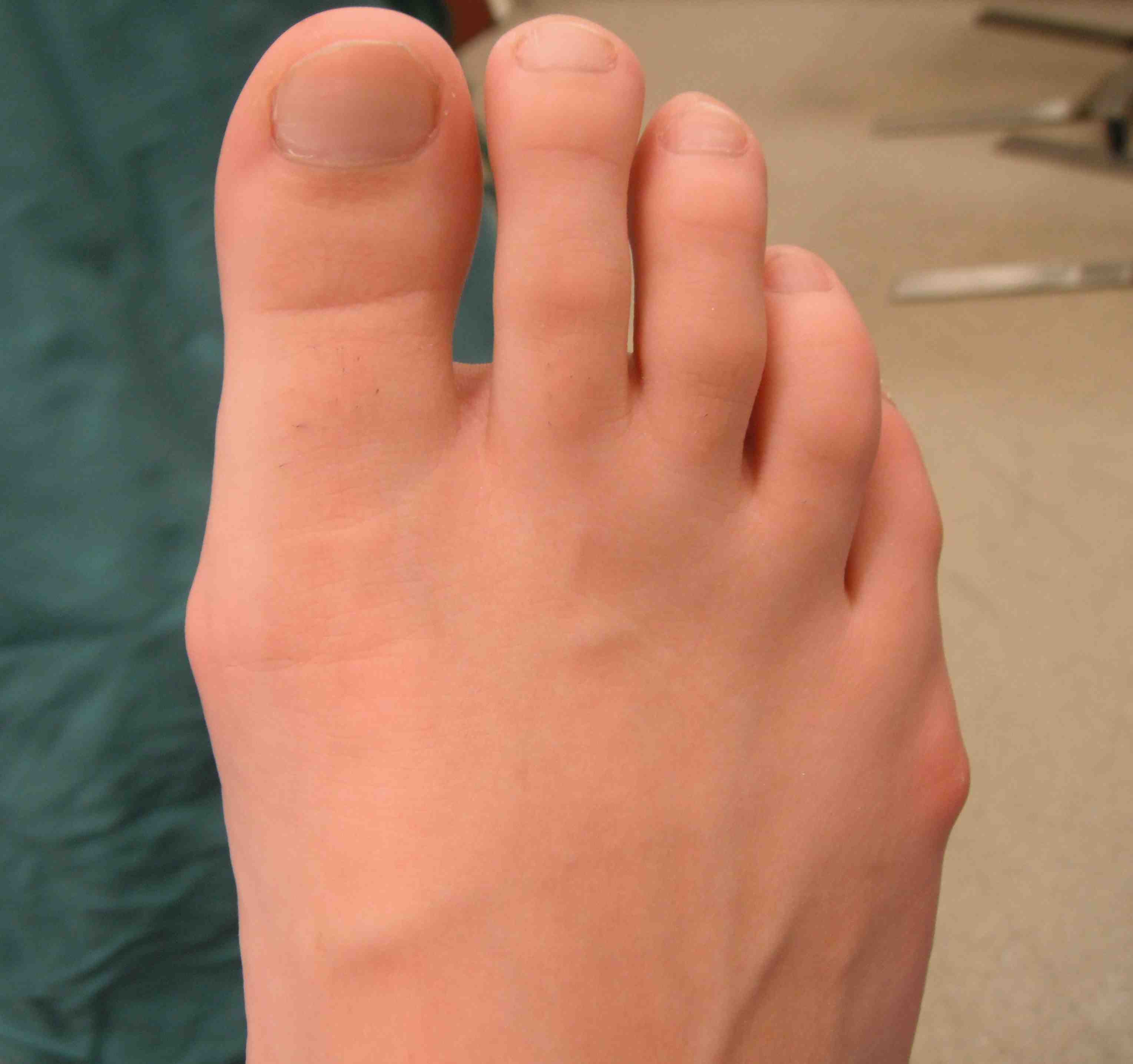
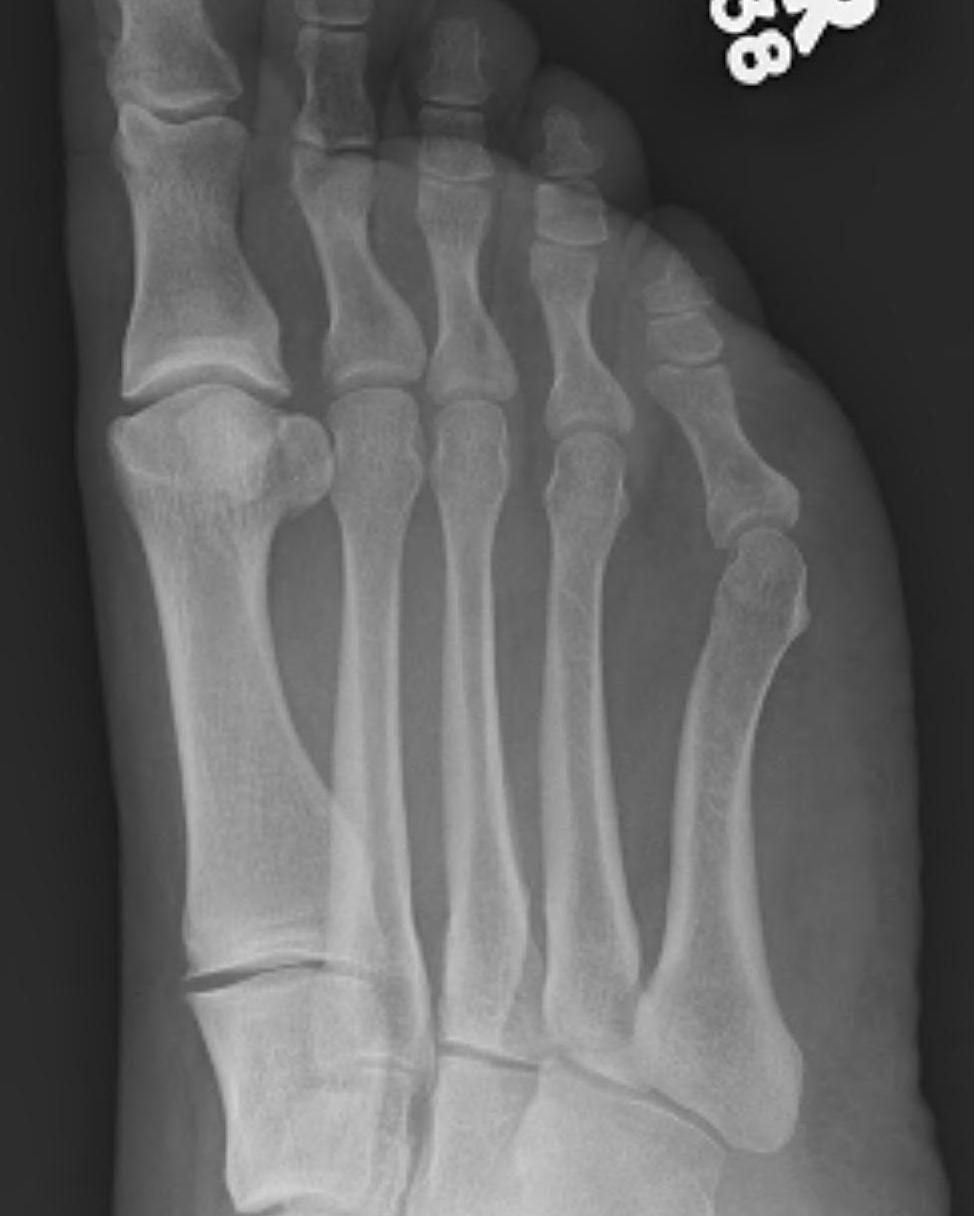

Definition
Painful prominence of lateral eminence of 5th metatarsal head
Epidemiology
3 - 5 x more common in women
4th - 5th decade
Coughlin Classification
| Type I | Type II | Type III |
|---|---|---|
| Prominent lateral condyle 5th metatarsal head | Lateral bowing of 5th metatarsal |
Increased 4/5 intermetatarsal angle Normal 5 degrees 5th metatarsal straight |
| Lateral condylectomy | Osteotomy | Osteotomy |
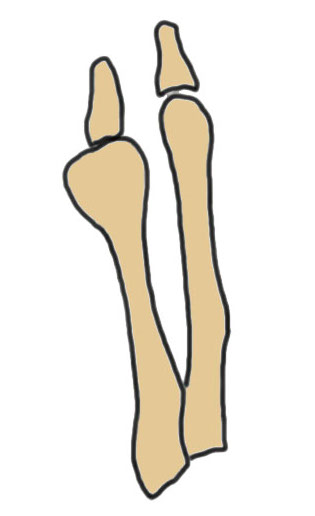 |
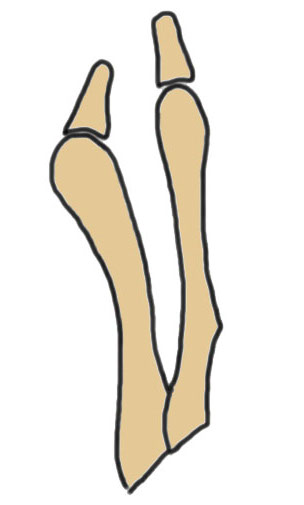 |
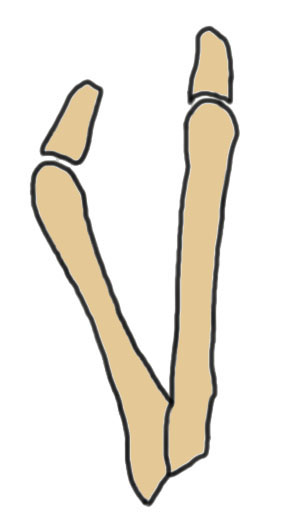 |

Lateral bowing of 5th metatarsal

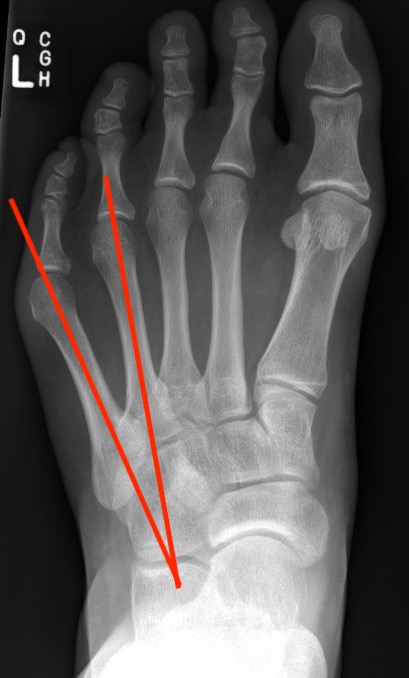
Increased intermetarsal angle (IMA). Normal is 5 degrees
Clinical
Lateral callous / bursitis
Difficulty shoe wear

Nonoperative Management
Options
Wider shoes
Toe spacers
Operative Management
Issue
Procedure depends on the underlying deformity
- avoid proximal osteotomy due to poor blood supply
- i.e. Jones fracture
Options
Lateral condylectomy / cheilectomy
Osteotomy
Lateral condylectomy / cheilectomy
Indications
- Type I
- normal IMA
Osteotomy
Indications
- lateral bowing 5th metatarsal
- increased inter-metatarsal angle
Types
- proximal versus distal
- open versus minimally invasive
Osteotomy


Distal
- Weil distal sliding osteotomy
- Chevron osteotomy
Proximal
- Coughlin sliding oblique midshaft osteotomy
- proximal medial closing wedge osteotomy
- Scarfette osteotomy
| Weil | Chevron | Coughlin | Medial closing wedge | Scarfette |
|---|---|---|---|---|
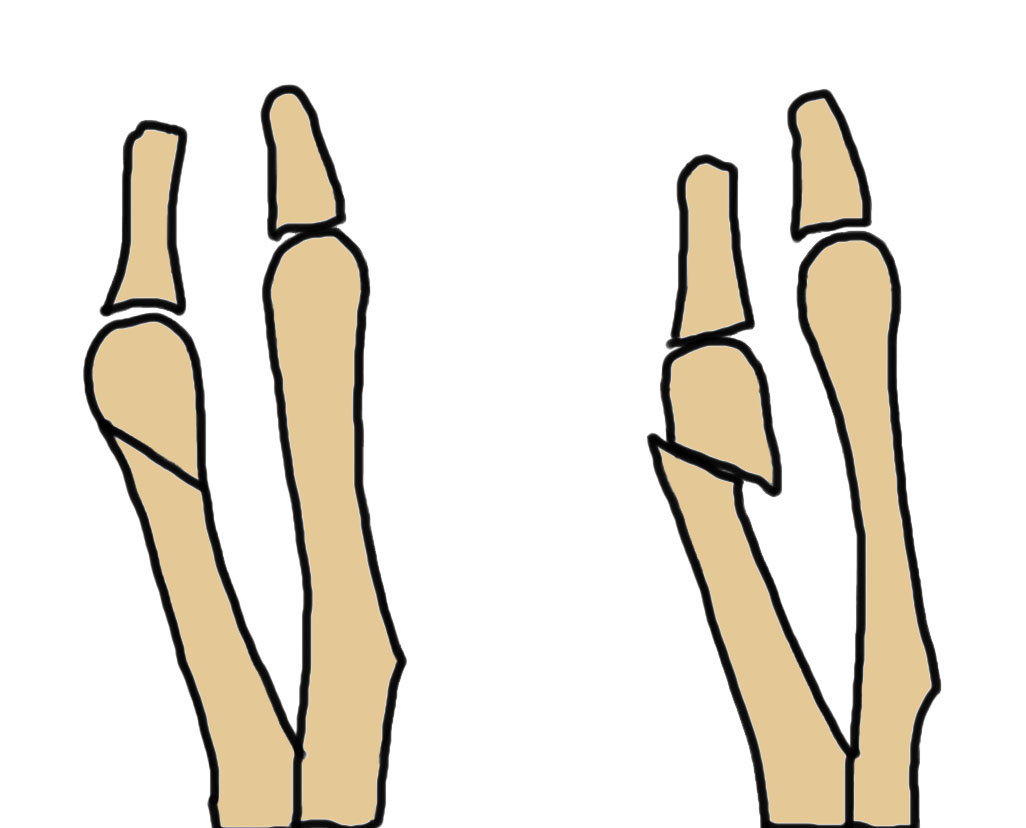 |
 |
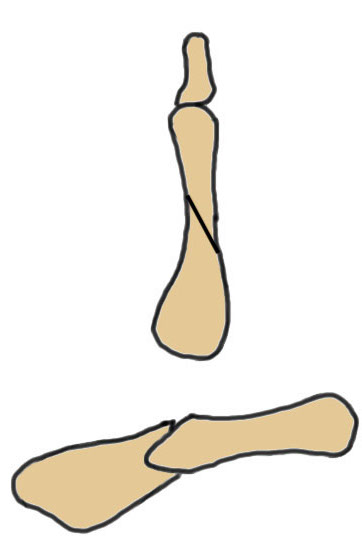 |
 |
 |
Results
Martijn et al J Foot Ankle Surg 2018
- systematic review of 28 articles
- overall success rate 93%
- greatest satisfaction with proximal osteotomy
- lowest complication with distal osteotomy
Techniques
Percutaneous distal osteotomy PDF
Vumedi Chevron Osteotomy for bunionette
Sliding oblique metatarsal osteotomy PDF
Proximal medial closing wedge osteotomy PDF
